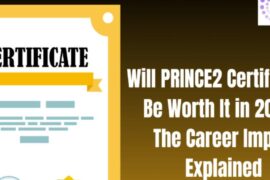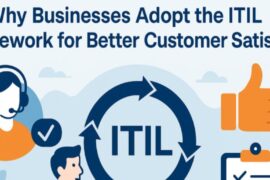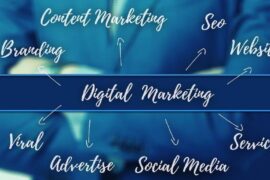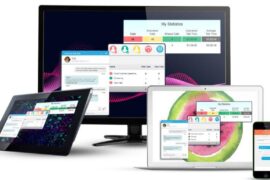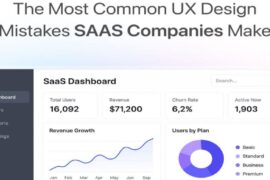In today’s digital landscape, crafting compelling email newsletters goes beyond mere dissemination of information; it’s about fostering meaningful engagement with your audience. Effective design plays a vital role in achieving this goal, influencing how subscribers perceive and interact with your content. This article delves into the principles and practices of custom email newsletter design that enhance engagement. From leveraging visual appeal and optimizing readability to integrating interactive elements and personalization strategies, each section explores actionable insights aimed at maximizing the impact of your email marketing efforts. By understanding and implementing these strategies, marketers can cultivate stronger connections with their audience, driving higher levels of interaction and conversion.
Grabbing Attention with Visual Appeal
In the digital age, the visual appeal of email newsletters is crucial for capturing and maintaining subscribers’ attention. Effective design not only makes newsletters aesthetically pleasing but also ensures that content is engaging and memorable. Visual elements play a significant role in this process:
- Vibrant Images and Animations: Imagine opening an email with striking visuals—vibrant images and dynamic animations that immediately draw you in. Companies like Smashing Magazine use custom illustrations instead of generic stock photos to make their content more relatable and visually appealing. These illustrations not only align with the brand’s identity but also enhance engagement by creating a distinctive visual experience.
- Interactive Elements like GIFs: Incorporating animations such as GIFs can further enhance engagement by showcasing products or services in a fun and interactive manner. For example, Rifle Paper Co. uses GIFs to demonstrate their products’ features effectively without overwhelming subscribers with text. This approach entertains recipients while delivering key messages efficiently.
- Whitespace Management: Modern email design strategically utilizes whitespace to improve readability and guide the reader’s focus. Newsletters from The Royal Children’s Hospital Foundation exemplify this by using whitespace effectively to highlight important messages and calls-to-action. By creating a visual breathing room around key elements, these newsletters ensure clarity and ease of navigation.
Utilizing custom email templates from platforms like Mailchimp simplifies the process of incorporating these visual elements. These templates offer professionally designed layouts that maintain brand consistency while enhancing visual appeal. By leveraging captivating images, interactive animations, and strategic whitespace, marketers can grab subscribers’ attention and enhance engagement rates.
Enhancing Readability and Scannability
The readability and scannability of email newsletters significantly impact how subscribers engage with content. Well-designed newsletters prioritize clarity and ease of navigation, making information accessible and digestible:
- Clear Headlines and Content Organization: Effective email newsletters employ the inverted pyramid design principle, presenting the most critical information first. Companies like Invision use compelling headlines to guide readers seamlessly through the content, ensuring key messages are immediately understood.
- Subheadings and Bullet Points: Breaking down information into subheadings and bullet points facilitates quick comprehension. These formatting elements allow subscribers to scan the newsletter efficiently, grasping essential points without reading every detail. This approach saves time and keeps readers engaged by delivering concise and relevant information.
- User-Friendly Layouts: Platforms such as Mailchimp offer customizable email templates designed to optimize content structure. These templates ensure newsletters are consistently formatted and visually appealing across devices. By choosing layouts that prioritize readability and scannability, marketers enhance the overall user experience.
By focusing on readability through clear organization, subheadings, bullet points, and user-friendly templates, brands can create newsletters that effectively communicate their messages and encourage meaningful interactions with subscribers.
Leveraging Interactive Elements
Interactive elements in email newsletters transform static content into dynamic experiences, enhancing engagement and interaction with subscribers:
- Videos: Including videos in newsletters allows subscribers to interact with content visually and experientially. For example, a company might showcase product demos or behind-the-scenes footage to engage and educate their audience.
- Polls and Surveys: Interactive polls and surveys encourage subscribers to participate actively. They provide valuable feedback to brands while making subscribers feel involved and valued.
- Quizzes and Games: Incorporating quizzes or games into newsletters makes the experience interactive and entertaining. Subscribers can engage with the brand in a fun way, potentially leading to increased brand loyalty and engagement.
Platforms like Mailchimp facilitate the integration of these interactive elements through customizable email templates. These templates enable marketers to incorporate dynamic content blocks seamlessly, enhancing the overall email experience. By leveraging videos, polls, quizzes, and games, brands can create newsletters that captivate subscribers and drive higher levels of engagement.
Personalization and User-Generated Content
Personalization and user-generated content (UGC) are powerful strategies that enhance email engagement by making content relevant and relatable to subscribers:
- Dynamic Content Customization: Tailoring emails based on subscriber preferences and behaviors increases relevance and encourages interaction. For instance, personalized product recommendations based on past purchases can drive higher click-through rates.
- User-Generated Content (UGC): Incorporating UGC such as customer reviews, testimonials, or photos in newsletters adds authenticity and credibility. It showcases real-life experiences with the brand’s products or services, influencing purchase decisions and fostering community engagement.
- Exclusive Offers and Rewards: Providing personalized offers and rewards to subscribers based on their interactions with the brand strengthens customer loyalty. Exclusive discounts or early access to new products incentivize subscribers to engage with newsletters regularly.
Platforms like Mailchimp offer customizable email templates that facilitate the integration of personalized content and UGC. These templates empower marketers to create compelling newsletters that resonate with subscribers on a personal level. By leveraging dynamic content customization, UGC, and exclusive offers, brands can enhance email engagement, build trust, and drive conversions effectively.
Optimizing for Mobile Responsiveness
Have you ever tried to read an email on your phone, only to find it difficult to navigate or read? That’s why optimizing email newsletters for mobile devices is crucial—it ensures that subscribers can easily access and engage with your content no matter what device they’re using.
Mobile optimization involves designing emails that automatically adjust to fit smaller screens and touch interfaces. For example, imagine receiving an email that looks just as good on your phone as it does on your computer. This seamless experience encourages subscribers to read through the entire newsletter and take action.
Responsive design principles play a key role in mobile optimization. This means using scalable images, legible fonts, and a layout that adapts to different screen sizes. For instance, newsletters from leading brands like Nike or Apple are designed to be responsive, ensuring that every subscriber receives a consistent and user-friendly experience, whether they’re using an iPhone, Android device, or tablet.
Moreover, testing emails across various devices and email clients ensures compatibility and readability. This proactive approach may help identify and fix any formatting issues before newsletters are sent to subscribers, ensuring a seamless user experience.
By prioritizing mobile responsiveness in custom email newsletter designs, brands can effectively reach and engage with their mobile-centric audience. This not only improves engagement metrics such as open rates and click-through rates but also enhances overall customer satisfaction and brand perception.
Conclusion
In today’s digital age, the impact of custom email newsletter design on engagement cannot be overstated. By implementing thoughtful design strategies, brands can significantly enhance their ability to connect with subscribers and drive meaningful interactions.
Effective design starts with visual appeal. Incorporating captivating images, animations like GIFs, and strategic use of whitespace helps draw readers in and keep them engaged. For example, newsletters from brands like Smashing Magazine and Rifle Paper Co. leverage illustrations and interactive elements to create memorable experiences for subscribers.
Furthermore, enhancing readability and scannability through clear headlines, subheadings, and bullet points ensures that key messages are easily understood. This approach, exemplified by companies like Invision, guides readers through content seamlessly, increasing the likelihood of interaction.
Personalization and user-generated content add authenticity and relevance to newsletters. Tailoring content based on subscriber preferences and showcasing real customer experiences, as seen in campaigns by leading brands, fosters stronger connections and boosts engagement.
Mobile optimization is also crucial. Ensuring emails are responsive and accessible on all devices—from smartphones to tablets—ensures a seamless user experience. Brands like Nike and Apple excel in delivering consistent, user-friendly designs across various platforms.
By embracing these design principles, brands not only enhance engagement metrics such as open rates and click-through rates but also cultivate lasting relationships with their audience. Custom email newsletter design, when executed effectively, serves as the most powerful tool for driving engagement and achieving marketing objectives in today’s competitive landscape.








